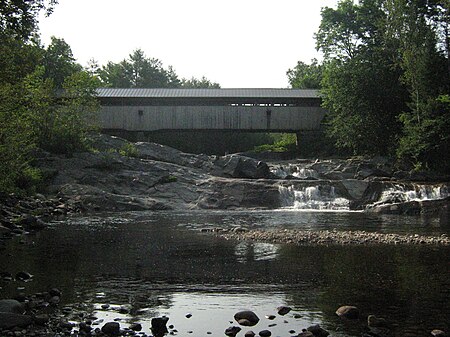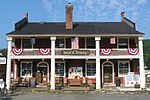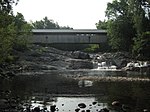Wild Ammonoosuc River
New Hampshire placenames of Native American originNew Hampshire river stubsRivers of Grafton County, New HampshireRivers of New HampshireTributaries of the Connecticut River

The Wild Ammonoosuc River is a tributary of the Ammonoosuc River, about 15 miles (24 km) long, in northwestern New Hampshire in the United States. Via the Ammonoosuc River, it is part of the watershed of the Connecticut River, which flows to Long Island Sound. The Wild Ammonoosuc flows for its entire length in Grafton County. It rises in the White Mountains at Kinsman Notch in the town of Woodstock and flows generally northwestwardly through the towns of Easton and Landaff to Bath, where it joins the Ammonoosuc. New Hampshire Route 112 follows the river for its entire length.
Excerpt from the Wikipedia article Wild Ammonoosuc River (License: CC BY-SA 3.0, Authors, Images).Wild Ammonoosuc River
Ammonoosuc Rail Trail,
Geographical coordinates (GPS) Address Nearby Places Show on map
Geographical coordinates (GPS)
| Latitude | Longitude |
|---|---|
| N 44.154444444444 ° | E -71.981111111111 ° |
Address
Ammonoosuc Rail Trail
Ammonoosuc Rail Trail
03740
New Hampshire, United States
Open on Google Maps








